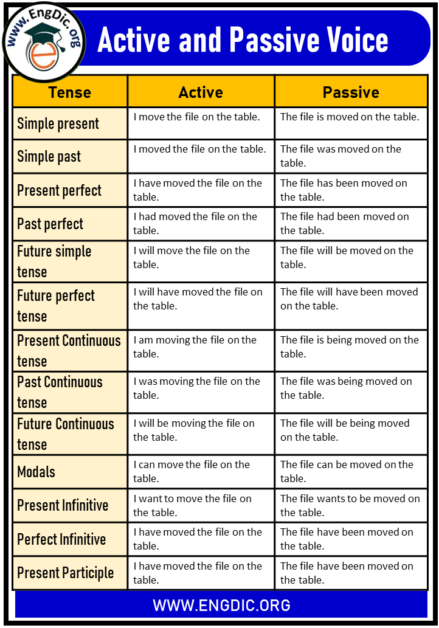Understanding the difference between active and passive voice is essential in writing clear and effective sentences. In active voice, the subject of the sentence performs the action, while in passive voice, the subject receives the action. Using the appropriate voice can help improve the clarity and flow of your writing.
It is important to be able to recognize and use both active and passive voice in your writing. Knowing when to use each can enhance the impact of your sentences and convey your message more effectively.
Active and Passive Voice Tense Chart
| Tense | Active Voice | Passive Voice |
|---|---|---|
| Present Simple | I write a letter. | A letter is written by me. |
| Past Simple | She sang a song. | A song was sung by her. |
| Present Continuous | They are building a house. | A house is being built by them. |
When writing in active voice, the subject of the sentence is the doer of the action. This can make your writing more direct and engaging. In passive voice, the subject of the sentence is the receiver of the action, which can sometimes make the sentence less clear or concise.
It is important to use active voice when you want to emphasize the doer of the action or make your writing more engaging. Passive voice can be useful when the focus is on the receiver of the action or when the doer is unknown or less important.
By understanding the differences between active and passive voice and knowing when to use each, you can improve the clarity and impact of your writing. Practice using both voices in your writing to become more versatile and effective in conveying your message.
In conclusion, mastering the use of active and passive voice can enhance your writing skills and help you communicate more effectively. By utilizing the tense chart and understanding the nuances of each voice, you can craft sentences that are clear, engaging, and impactful.
